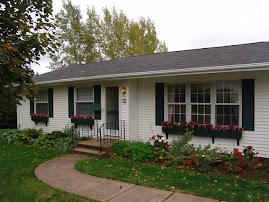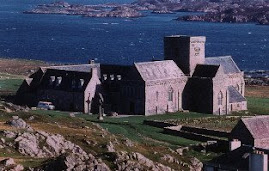









Once we paid proper homage to Samuel Seabury, we got directions to St. Andrew’s Church. St. Andrew’s is now the Cathedral for the Diocese of Aberdeen and the Orkneys. The Diocese of Connecticut has a sort of companion relationship with this Scottish diocese, and the bishops from each diocese have visited back and forth for several years.
We met a steward of the Cathedral who shared a lot of information about the Connecticut/USA connection with St. Andrew’s. The steward was very proud of the connection, and he was so happy to have visitors from Connecticut. He let us into the areas of the building that are usually cut off from visitors. According to him, back in the 1920s the Episcopal Church USA wanted to build a new cathedral for the church in Aberdeen, but the stock market crash caused them to change their plan. Instead of a whole new church, they decided to extend the east end of St. Andrew’s and call it the Samuel Seabury extension. In the extension is a big stained glass window on the east wall with the American flag in one section, and a large ornate gold structure called a Baldacchino standing in the altar area. On the ceiling of one of the side aisles are the seals for the forty-eight states that made up the U.S. at that time. I also discovered a picture of the interior of Christ Church Cathedral in Hartford on the back wall of St. Andrew’s.
I’ve included a picture of the big statue of Bishop Skinner who consecrated Samuel Seabury.
St. Andrew’s is a rather large building and more ornate than your average parish church, but it is neither huge nor very elaborate. Most of the windows are plain glass. It’s quite nice but rather understated for a cathedral.
On the other hand, as we were walking through Edinburgh a few days later, we discovered St. Giles Church, the “mother church of Presbyterianism” which is one of the most elaborate churches we have seen anywhere. Every window is stained glass. I have always thought that the Episcopal Church is known more for ornateness and the Presbyterian Church has a reputation for being austere and plain. The two buildings are exactly the opposite of what you would expect to represent the two denominations. Just goes to show there really are exceptions to all my preconceptions. I have included a picture of the outside of St. Giles, but not the inside because I didn’t want to pay the fee to take pictures.



No comments:
Post a Comment